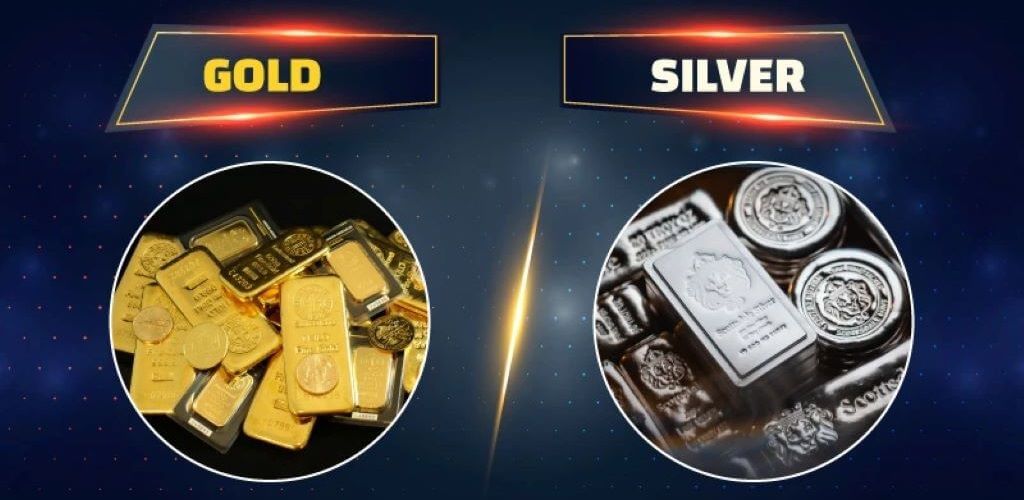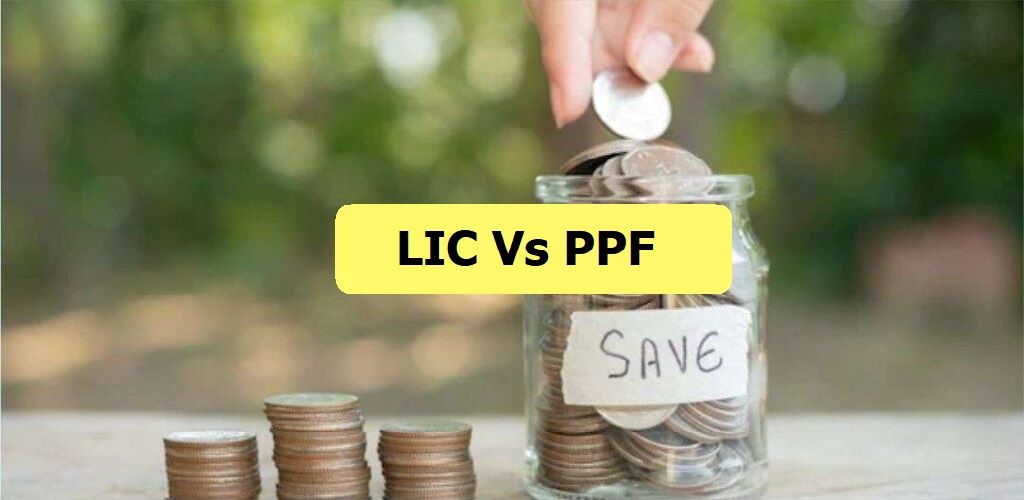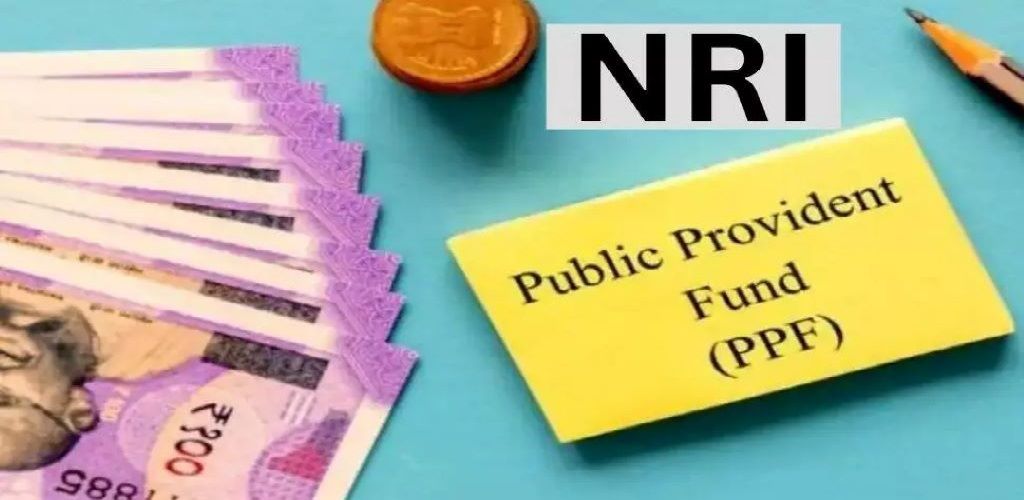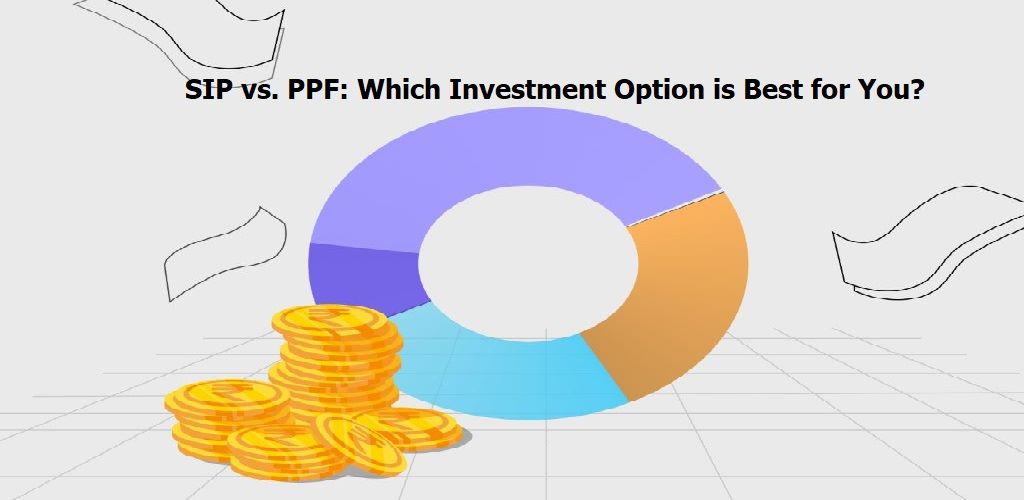Seeking strategies to navigate future uncertainties? Consider the option of investing in precious metals like gold and silver. Both gold and silver can potentially serve as a safeguard to varying extents, whether it’s a looming economic downturn or a sustained period of rising inflation.
Gold, cherished for its scarcity and enduring appeal, stands as a symbol of wealth and stability. In contrast, silver, known for its abundance and versatility, is widely utilized in industries, providing a more accessible gateway for those entering the precious metals market.
In this examination of gold versus silver, we delve into their investment dynamics to uncover the distinct attributes that make these metals intriguing to both individuals and investors.
Gold vs Silver Investment: Which Metal Shines economically Brighter?
Across history, silver and gold have consistently functioned as valuable safeguards against unforeseen and extreme events, including market crashes, currency devaluation, and rare occurrences. Recognized as reliable tools for hedging, these precious metals have demonstrated their effectiveness as safeguards against inflation.
- Liquidity
The concept of liquidity revolves around the ease with which an asset can be bought or sold without causing significant disruptions in the market. In the case of silver and gold, both metals have enjoyed substantial market demand, ensuring a satisfactory level of liquidity. However, gold holds a slight advantage over silver in terms of liquidity. This is mainly attributable to its unparalleled popularity as the most sought-after precious metal, surpassing the demand for any other. Consequently, gold provides a higher level of ease in buying and selling compared to silver.
- Volatility
Historically, silver has consistently exhibited a slightly higher degree of volatility compared to gold. Despite this, the demand for silver has experienced exponential growth, particularly in 2022. The substantial demand for silver is largely propelled by its extensive use in industry, contributing to higher levels of price fluctuations. This makes the demand for silver inherently cyclical. Consequently, even minor imbalances between supply and demand can exert significant influences on silver prices.
As a result, silver can be seen as both a potentially lucrative commodity and a risky asset due to its susceptibility to market fluctuations. When compared on the scale of stability, it becomes evident that investments in gold have maintained a notably more stable trajectory than those in silver.
- Demand and Utility
Gold, renowned for its exceptional conductivity, plays a crucial role in industries like electronics, thermal management, and conductor manufacturing. Beyond its industrial applications, gold also holds substantial cultural significance, particularly in India, where it is highly esteemed during weddings and auspicious events.
In contrast, silver finds extensive use in a variety of industries, including automobiles, electronics, thermal management, medicine, and manufacturing. Approximately 60% of all mined silver is utilized in industrial production. However, due to its significant reliance on industrial demand, silver can be more profoundly impacted during economic downturns compared to gold.
- Affordability
When comparing silver and gold, it’s evident that silver is more affordable than gold. Currently, the price of a small amount of gold can purchase a more substantial quantity of silver.
Given that gold is scarcer than silver, governments worldwide tend to hold reserves of gold, while a similar policy is not commonly extended to silver. If the value of gold were to drop significantly, it could pose challenges for the financial system and introduce uncertainty for governments, as silver may not be as reliable a backup.
- Long-Term Returns
Gold’s historical track record underscores its reliability in delivering long-term returns. Investors frequently turn to gold during turbulent economic periods to safeguard their wealth. On the other hand, silver, with its potential for growth, derives advantages from its dual role as both a store of value and an industrial metal. This unique position provides opportunities for substantial long-term returns for investors.
How You Can Invest in Gold and Silver?
Let’s first discuss the investment in gold.
Investing in Gold:
- Physical Gold
One of the most traditional methods of investing in gold in India is acquiring physical gold. This can be done by purchasing gold in the form of jewelry, coins, or bars from reputable sources such as jewellers, banks, or government-authorized agencies. It’s essential to ensure that the gold you buy carries the Bureau of Indian Standards (BIS) hallmark, confirming its purity. This hallmark serves as a quality assurance standard for gold products in India.
- Gold ETFs (Exchange-Traded Funds)
Gold Exchange-Traded Funds (ETFs) are a popular and convenient method of investing in gold without the necessity of holding physical gold. These funds are listed on stock exchanges and closely track the price movements of gold. To invest in Gold ETFs, you would require a Demat (Dematerialized) account, and you can purchase units through a stockbroker. This allows investors to gain exposure to the price of gold through the stock market without the complexities associated with owning and storing physical gold.
- Sovereign Gold Bonds (SGBs)
The Indian government issues Sovereign Gold Bonds periodically, providing an excellent avenue for individuals to invest in gold. These bonds not only offer the potential for capital appreciation but also feature fixed interest. Investors can acquire Sovereign Gold Bonds through scheduled commercial banks, designated post offices, or recognized stock exchanges. This investment instrument allows individuals to participate in the gold market while also earning fixed returns, making it a unique combination of both an investment and a financial asset.
- Digital Gold
Several online platforms and mobile apps offer the option to purchase digital gold. These platforms provide a convenient means to buy small amounts of gold at current market prices, and the purchased gold is stored digitally. Investing in digital gold can be accessible and convenient, especially for those looking to start with smaller amounts or manage their investments through digital platforms. This method allows investors to participate in the gold market without the need for physical storage or handling of the precious metal.
- Gold Savings Accounts
Some banks provide gold savings accounts as a unique way to invest. In these accounts, you can deposit money, and the bank converts the deposited amount into gold. Over time, your savings accumulate as gold, offering a convenient and systematic way to invest in smaller amounts. This approach provides individuals with the opportunity to build up a gold investment gradually, without the need for a large upfront sum.
Investing in Silver:
- Physical Silver
Similar to gold, you have the option to buy physical silver in various forms, including coins, bars, or rounds. Reputable dealers and jewelry stores typically offer silver for purchase. It’s important to ensure that when buying physical silver, you receive a certificate of authenticity and purity. This certification is crucial for verifying the quality and authenticity of the silver you acquire, assuring you of its purity and value.
- Silver ETFs (Exchange-Traded Funds)
Silver Exchange-Traded Funds (ETFs) are financial instruments that provide an opportunity to invest in silver without the necessity of physical storage. To invest in Silver ETFs, you can use your Demat (Dematerialized) account and engage the services of a stockbroker. These ETFs track the performance of silver prices and allow investors to gain exposure to the silver market through the stock exchange.
- Silver Coins
Silver coins represent a practical and affordable means of investing in silver. They are available in various weights, catering to a range of budgets. These coins can be acquired from jewellers, banks, or specialized bullion dealers. The versatility in weights allows investors to choose an amount that aligns with their investment goals, making silver coins a flexible option for those looking to diversify their portfolio with physical silver.
- Online Platforms
Online platforms provide the convenience of buying and securely storing silver. These platforms typically offer a transparent buying process, allowing investors to purchase silver in various forms, such as coins and bars. Investing in silver through online platforms can be a user-friendly and accessible option, providing flexibility and convenience for individuals who prefer digital solutions for managing their precious metal investments.
Factors To Consider When Deciding to Invest in Gold or Silver
Here is a list of the aspects to consider before investing in gold or silver.
- Research and understand the market
The market for precious metals, including silver and gold, is known for its unpredictability and price fluctuations. Staying informed through thorough research is crucial for investors looking to navigate these dynamics. Several factors can influence the prices of silver and gold, and being aware of these influences is essential for making informed investment decisions.
Staying informed about the economic market is crucial for making informed investment decisions. Following reliable financial news channels and keeping an eye on market trends can provide valuable insights into the factors influencing the economy and financial markets.
- Set aside your budget
Determining how much money you wish to invest in silver and gold is a critical step in the investment decision-making process. Before proceeding, it’s essential to carefully assess your financial situation and set realistic investment goals. Investing in precious metals like silver and gold typically involves significant capital, so understanding the pros and cons of such investments is crucial.
Consider your overall financial portfolio, risk tolerance, and investment horizon. Determine the amount of money you can comfortably allocate to silver and gold without jeopardizing your overall financial well-being. It’s crucial to strike a balance between potential returns and the level of risk you are willing to undertake.
- Find a reputable dealer or shop
When purchasing silver or gold from the market, it’s crucial to opt for stores with a solid reputation and integrity. Selecting a reliable dealer ensures a secure acquisition of your desired quantity of these precious metals, minimizing the risk of future complications.
Even if you already have a few stores in mind, we recommend conducting fresh research to identify stores worthy of your investment. The goal is to avoid paying someone who might provide duplicate or subpar-quality items, ensuring a trustworthy and satisfactory transaction.
- Determine the purity
It may be surprising, but there is a significant presence of counterfeits in the market, and they often closely mimic the appearance of genuine gold or silver. Distinguishing these fakes from authentic precious metals can be challenging. Common authentication methods involve scrutinizing the weight, dimensions, and purity markings of the metal.
When assessing purity, it’s crucial to pay attention to hallmarks and certifications. This is a mandatory step in verifying the authenticity of the precious metal. For instance, 24-karat gold is considered the purest form, typically available in coin or bar shapes. It is not suitable for making jewelry.
- Consider storage options
Given the increasing crime rates globally, wearing gold or silver jewelry outside of your home might be a concern. Additionally, due to government-imposed restrictions on the amount of gold you can keep at home, you might need to store the remainder in a bank or similar secure options.
Therefore, it is crucial to carefully consider storage options before investing in these precious metals. You may opt to store them at home in a safe or a bank deposit box. Alternatively, some investors prefer third-party storage services for an added layer of security and peace of mind
What you can do is evaluate your best options, weigh the benefits and drawbacks of each, as well as the level of protection each offers, and then move forward with the option you believe to be the best one.
Gold versus Silver Investment: Which is the Right Choice?
Investing in precious metals, such as gold and silver, can be a prudent strategy for securing your financial future. These metals not only retain their value but also offer the potential for long-term returns and serve as a hedge against inflation.
Whether you opt for physical gold and silver, ETFs, or silver coins, conducting thorough research and aligning your investments with your financial goals and risk tolerance is essential. Diversifying your investment portfolio is key to safeguarding and growing your wealth over time. Therefore, when deliberating on where to allocate your funds, recognize that gold and silver extend beyond being merely beautiful adornments; they represent a pathway to a financially secure future.
Frequently Asked Questions
Gold has historically demonstrated a better track record over extended periods, while silver is often seen as a valuable portfolio diversifier. To determine which metal is safer for your specific circumstances, a thorough analysis of both metals and their respective markets is essential, taking into account your own risk tolerance.
Before making any investment decisions, especially in precious metals, it is advisable to consult with a financial advisor.
When it comes to assessing risk, silver tends to be more volatile than gold. Several factors contribute to the price volatility of silver, including changes in economic conditions, fluctuations in gold prices, and its smaller market size compared to gold. The smaller market makes silver more susceptible to higher price fluctuations even with small changes in supply or demand.
Gold is preferred for making jewellery for several reasons. One key factor is that gold is one of the least reactive metals, meaning it does not readily react with oxygen, water, or acids. This property allows gold to maintain its luster and resist tarnishing over time.
Additionally, gold is highly ductile and malleable, making it easy to work with and shape into intricate designs. These qualities make gold an ideal material for crafting jewellery, allowing artisans to create detailed and elaborate pieces that retain their beauty and durability.
Both gold and silver are commonly regarded as hedges against inflation. In times of inflation, when the general price levels of goods and services rise, the value of currency tends to decrease. Investors often turn to precious metals like gold and silver as a means to preserve their purchasing power.
Yes, there are benefits to diversity when gold and silver are included in an investing portfolio. The low correlation that precious metals have with other asset classes, including equities and bonds, can help lower the overall risk of a portfolio.







